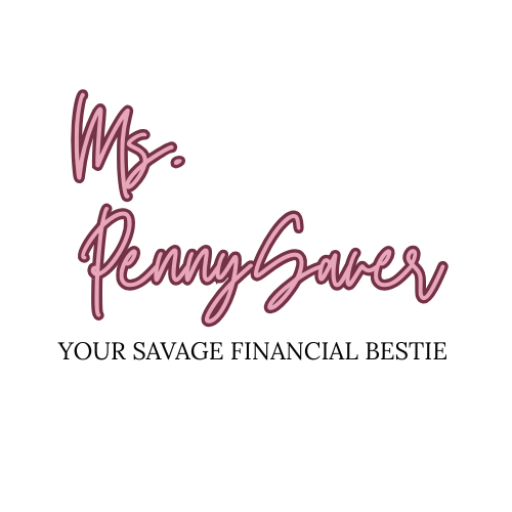
What Are Tariffs? (The Lowdown, No Econ Degree Needed)
Imagine you’re snagging a $20 phone case from some overseas site (because Gen Z doesn’t pay full price, duh). A tariff’s that extra fee—say, 10%—the U.S. tacks on when it crosses the border. So, that $20 becomes $22, paid by the importer (the company shipping it in), who then decides whether to eat the cost or nudge it onto you. Spoiler: It’s usually you. Tariffs are all about making foreign goods pricier, so American-made stuff looks like the better deal. The cash? It flows to the U.S. Treasury—think of it as a glow-up fund for the country, not a handout to some foreign VIP.
Back in the day, tariffs were America’s petty flex—like the 1930 Smoot-Hawley Act, which jacked rates to 20% and accidentally made the Great Depression a global party no one RSVP’d to. Today, they’re Trump’s big play to boost U.S. jobs and tweak the trade game. Love him or not, his current tariffs 2025 are a vibe shift—some say it’s genius, others say it’s chaos. We’re here to unpack both sides, because your empire-building hustle deserves the full tea.
Trump’s Tariff Playbook in 2025: What’s Cooking?
April 2025’s got all the drama, and Trump’s the chef stirring the pot. On April 2, he rolled out “Liberation Day,” dropping a 10% tariff on every import—no VIP list, just a blanket “pay up” for anything crossing the border. Then, on April 9, he turned up the heat with reciprocal tariffs on over 60 countries, ranging from 11% to a spicy 50%. China’s hit hardest with a 104% tariff—a wild 54% from Trump, plus 34% retaliation from Beijing, and an extra 50% he piled on for good measure (White House, April 2, 2025). Canada and Mexico? They’re at 25% on non-USMCA goods since March, with energy and potash at 10% (CBP, March 7, 2025). Steel and aluminum? Locked at 25% since February. Cars? Same deal since March.
Trump’s pitch? It’s an “America First” power move—cut that $1.2 trillion goods trade deficit from 2024 (Tax Foundation, April 4, 2025), bring jobs home, and flex on countries he says are gaming the system. He’s leaning on the International Emergency Economic Powers Act (IEEPA) to call it a national emergency—think trade imbalances, fentanyl smuggling, and immigration pressure. The vibe’s “treat us fair, or pay the price.” Some allies like Canada get a partial pass under USMCA, but the world’s not thrilled—China’s vowed to “fight to the end” with its own tariffs (Yahoo Finance, April 7, 2025), and the EU’s prepping a 20% clapback (BBC, April 8, 2025). It’s a global showdown, and your wallet’s got a front-row seat.
The Upsides: How Tariffs Could Slay for America
Let’s talk benefits—because there’s a case for tariffs that’s got some sparkle. Trump’s betting they’ll juice up U.S. manufacturing, and there’s history to back it. In his first term, 2018 tariffs on steel and aluminum added 8,700 jobs in those industries by 2019 (Economic Policy Institute). The White House says current tariffs 2025 could re-shore factories—imagine more “Made in the USA” tags on your next Target run. That’s jobs for your cousin who’s still couch-surfing, plus a stronger grip on stuff like steel and tech we don’t want to beg China for.
Long-term? If companies move production stateside—say, Apple builds iPhones in Ohio instead of Shenzhen—it could shrink that trade deficit and make America less of a global doormat. The Tax Foundation estimates these tariffs could pull in $2.9 trillion over a decade (April 4, 2025)—cash for roads, schools, or whatever Congress doesn’t waste it on. Plus, higher costs on imports might nudge you to shop local—supporting Etsy artisans or your neighborhood boutique. It’s a hustle that could pay off big if the world plays ball.
The Downsides: When Tariffs Sting Your Hustle
Now, the shade—because tariffs aren’t all glitter. That tariff impact on prices? It’s real, and it’s rude. J.P. Morgan pegs the universal 10% tariff at a 1.3% price bump—that’s $2,100 less in your pocket yearly (March 25, 2025). Yale’s Budget Lab goes harder—2.3% with all tariffs stacked, or $3,800 per household (April 2, 2025). Your avocado toast? Up 4%. That iPhone upgrade? Add $300+ with China’s 104% hit (CBS News, April 3, 2025). Clothes from Shein? 17% pricier (Budget Lab, April 2, 2025). Cars? A $4,000 jump (Budget Lab). Retailers like Walmart are already sweating—higher costs mean higher tags (NBC News, March 6, 2025).
Then there’s the global clapback—China’s dumping U.S. soy, the EU’s eyeing our tech exports, and markets crashed 5% on April 3 (NYT, April 5, 2025). J.P. Morgan’s now at a 60% recession odds by year-end (April 4, 2025), with GDP growth slashed to 1.3% and inflation at 2.7% (March 25, 2025). Economists like Scott Lincicome warn it’s a “huge tax increase” (CBS News, April 3, 2025)—not exactly the vibe if you’re saving for a Birkin.
Trump’s Strategy: The Long Game for America
Trump’s not just throwing darts—he’s got a vision. His current tariffs 2025 are about flipping the script on trade. The White House says it’s “America First” to the core—cut reliance on foreign goods, boost domestic jobs, and force other countries to rethink their own tariffs (April 2, 2025). If it works, picture this: By 2030, U.S. factories humming, that $1.2 trillion deficit shrinking, and your local Target stocked with American-made gear. It’s a bet on self-reliance—less begging China for chips during the next crisis, more control over our own destiny. The $2.9 trillion revenue could fund tax cuts or infrastructure, giving your hustle a bigger playground.
But it’s a gamble—Trump’s banking on companies moving fast, not just raising prices. If they do, your future self might thank him. If they don’t? Well, keep reading.
Worst-Case Scenario: When Tariffs Tank the Vibe
Let’s not sugarcoat it—if this goes south, it’s messy. Worst case? Full-on trade war—China, the EU, and others slap 50%+ tariffs back, U.S. exports like soy and tech crash, and GDP drops 0.7% over a decade (Tax Foundation, April 4, 2025). Inflation could hit 3-4%, forcing the Fed to hike rates and tank your side gig’s momentum (Guardian, April 2, 2025). J.P. Morgan’s recession odds spike to 60%—stores close, jobs dry up, and that $3,800 price hit per household feels more like $5K with retaliation (April 4, 2025). Your iPhone? $2,300. Your car? $50K. Chaos, babe—think Great Depression lite, not a cute TikTok trend.
How to Slay Anyway (Your Boss Babe Survival Kit)
No matter where you stand—Trump stan, skeptic, or just here for the tea—you’ve got this. Here’s how to hustle through the tariff impact on prices:
- Shop Smart: Go local—Etsy or farmers’ markets dodge the import tax sting.
- Cash Back Hustle: Stack rewards with Rakuten—offset that 4% grocery hike.
- Budget Like a Queen: YNAB keeps your latte fund intact.
- Side Gig It: Fiverr gigs pad your wallet when prices bite.
- Credit Glow: Watch your score with Credit Karma—don’t let tariff stress tank it.
Your Takeaway: Empire Over Everything
Tariffs in 2025? They’re a mixed bag, babe. What are tariffs? Taxes on imports that could make America a manufacturing queen—or a pricier place to shop. Trump’s strategy bets on jobs and cash long-term, and it might just work—think factories, swagger, and a tighter grip on our future. But the flip side’s real—higher prices, global shade, and a recession risk that’s got economists sweating. You’re not here to pick sides—you’re here to build an empire, tariffs or not. Use this tea to stay sharp, hustle harder, and keep your vibe unbreakable. Drop your tariff thoughts below—love ‘em, hate ‘em, or just want cheaper tacos? Let’s chat, queens!



